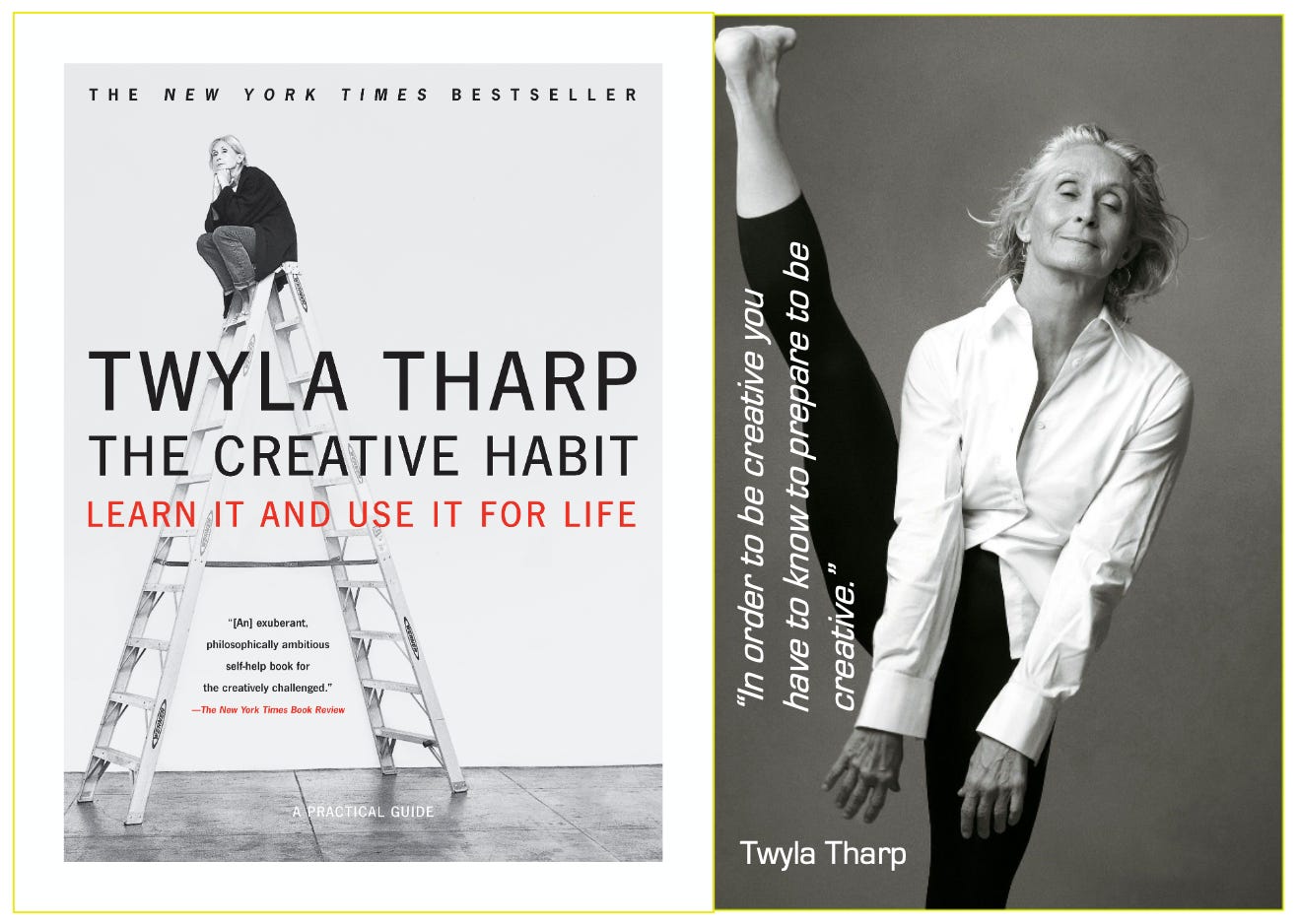Many of the things we want require us to figure out what will get us there. Imagine walking into a white room. It’s you, what you’re wearing, and not much else. How do you feel? Where do you start?
For some people, the empty room is terrifying — like a stage, a microphone, a blank sheet, a new canvas. Some people find that the moment before creativity kicks in opens a door so painful that they don’t even go there.
Imagine when your creativity represents the livelihood for a group of people. If you get up and walk away — from the computer, the canvas, the keyboard — if instead you reorder your closet, take a nap, go shopping, you’ll never know what your capable of.
Creativity is for everyone, says Twyla Tharp. Tharp choreographed shows — including Mikhail Baryshnikov in a crossover ballet Push Comes to Shove (1976) — and films — including Hair (1978), and Amadeus (1983.)
Business people who look for a new way to close a sale; engineers who are trying to solve a problem; parents who want their children to see the world in more than one way — everyone can learn to become (more) creative.
But before we figure out how to be creative, it’s worth asking —
What is creativity?
A definition can act like a compass to stir understanding. Media theorist and cultural critic Neil Postman said that a definition is an instrument of purpose; it’s valuable to know the question that led to it.
The question that led to this particular definition is whether creativity can be taught. If we want to learn, someone/something needs to teach us. With this in mind, I found Sir Ken Robinson’s definition of creativity the most insightful.
Keep reading with a 7-day free trial
Subscribe to On Value in Culture with Valeria Maltoni to keep reading this post and get 7 days of free access to the full post archives.





